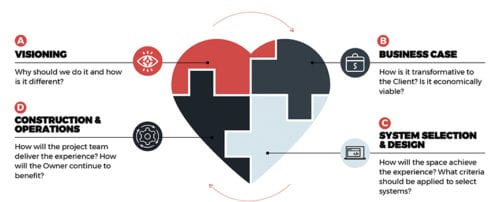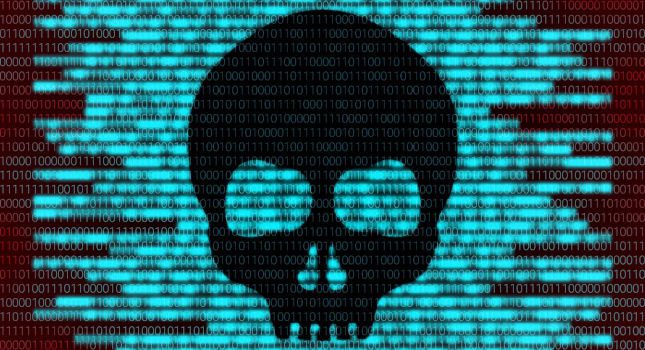Learning objectives
- Learn about the client’s business goals and develop metrics that can be used to show progress toward or compliance with them.
- Understand the foundational infrastructure pieces required to support integrated building systems.
- Identify the main criteria for system selection in smart buildings.
Owners, operators and occupants expect more from the built environment, and rightfully so. Technology continues to evolve at an exponential pace and there are many more tools, systems and services available to the average customer.
Terms like “internet of things,” “smart” and “open solution” are used as vague buzzwords to grab attention, but leave owners overwhelmed and unsure of which technologies or sensors to choose. Questions engineers and designers may be asked include:
- What is a smart building?
- What technologies will enable it?
- How do I ensure these systems can “talk” to each other and offer interoperability?
- What information technology or data security systems do I need to consider?
- How can I connect my systems to the cloud via the internet of things?
- Should I select vendor A or vendor B?
- What will my smart building look like in the future?
- What do I even do with all this data?
According to the Building Efficiency Initiative, a smart building is broadly defined as a building that delivers useful services that make occupants productive at the lowest cost and environmental impact over the building’s life cycle.
A smart building requires adding intelligence from the start of the design phase to the end of the building’s useful life. Smart buildings use converged networks during operation to connect a variety of subsystems, which traditionally operate independently, so that these systems can share information to enhance total building performance.
Instead of focusing on systems and sensors first, smart building consultants are leading discussions to define client goals and help reduce the noise of continuously evolving sensors and solutions. It is important to remember that we build buildings for people; technology should not complicate, but enable, a better building experience.
To meet the demands of modern tenants, owners are turning to their trusted consultants earlier in their design process, often even before any specific project is in mind to define their smart building. Consultants’ roles are evolving to guide conceptual visioning sessions, develop the foundations to support integrated building systems and to select systems to meet the owner’s goals.
How is this changing the way consultants approach projects? Two ways:
- In general, it is important that consultants have a deep understanding of the clients’ business and goals before thinking about design solutions (smart or not) to meet those needs.
- Some smart designs, systems or products are new or novel and may create significant added costs. To generate a truly accurate justification or return on investment, it is important to understand how such solutions may provide value to a business in categories consulting engineers may not traditionally be used to consciously impacting through design, such as occupant productivity.
Developing a vision
The first phase of client engagement for smart building projects is visioning. This is important because the term smart building has different meanings to different clients. The purpose of visioning is to learn or develop, alongside the client, the aspirations and operational pain points for their organization — not just their building or employees, but the business as a whole.
Most clients’ goals fall roughly into three categories: energy and water optimization, real estate efficiency and occupant or employee productivity. Ultimately, most clients are interested in the bottom line, which is some combination of these three categories. These categories are proportionally related to each other by orders of magnitude.
If, for an office space, annual energy and water costs are $x per square foot, then lease costs are roughly 10 times more per square foot and employees who work in that space have combined salaries of 100 times more per square foot (see Figure 2). This is also known as the “3-30-300 rule,” coined by Jones Lang LaSalle. These numbers vary widely depending on location and other factors, but the general proportional relationship is true for most businesses; energy costs are only a fraction of total annual operating costs.
Focusing on delivering spaces in which employees are happier, more comfortable and more productive can be orders of magnitude more impactful on the bottom line than just reducing and optimizing energy consumption. There are also nonmonetary reasons to focus on all three categories, as they can provide data to support corporate sustainability plans or core values. The key is determining where the client’s focus and attention lays among these three categories and where the consulting engineer’s responsibilities can make an impact.
Once some general areas of focus are established, the next step in visioning is to define specific metrics that can be measured throughout the life of their business or a project and used to assess ongoing performance (or lack thereof, and how to correct it). The visioning phase of an engagement is an important part of any project. Therefore, it is important that scope for this visioning phase is included in any consultant’s client engagement, especially for discussions around smart technologies.
The final step is to perform financial modeling of metrics that quantify the owner’s business goals. This is not just calculating these based on projected energy savings year-over-year, but also incorporating real estate efficiency (e.g., density of workstations) and metrics surrounding occupant comfort. Some clients may not be large enough or focused enough to have the expertise to perform this in-house; this can be a growth area for well-rounded consulting engineering or advisory services firms with specialization in studies like this.
With space and anonymized employee salaries included in the financial model, smart technology solutions that may seem expensive at first can demonstrate their complete value. Even with conservative estimates of improvements in these categories, the payback period can come out to an astonishingly short amount of time.
This is exactly what resulted from a financial model and analysis for a leading global investment banking corporation. Although it did take some convincing and time to earn this client’s trust with some internal financials (lease costs and salaries, which were anonymized and summed from real data), this information was essential to the accuracy of the financial model. The resulting payback period was so low that some assumptions had to be tweaked to extend the period to make it more credible to their leadership.
Smart building design
With a clear vision and financial analysis in hand, the design phase can commence. At the essence of design for connected buildings and smart solutions is the ability to share data between building systems. A few foundational infrastructure pieces are required to support integrated building systems and collection of smart metrics.
Converged network
A converged network provides efficiency increases by centralizing management of IT resources and reducing the amount of hardware, as well as creating a system with the flexibility and performance to scale. Convergence is also the basis for cost-effective and efficient analysis of data at scale.
Even within the building space, a consultant’s role has increased to require a fundamental understanding of the network and typically help with design to support the speed and resiliency necessary for real-time building data. Partnerships have grown between IT departments and consultants as more devices become connected to the network, increasing security concerns and the need to solve them collaboratively.
IT provides its specialized knowledge of systems, including network equipment, fiber and duct bank utility infrastructure provisions, enterprise web-based services supporting campus operations and integration of data sources. In addition, IT defines policies for device management and cybersecurity and may want to perform hands-on testing of sample devices before implementing across a campus.
Accessible and available data
Additionally, traditional mechanical, electrical and plumbing systems are capturing massive amounts of data every day. How, as owners, can this data be mined and leveraged to produce actionable insights? While the answer relies on those goals defined in the visioning phase, data from all systems needs to be accessible and available. Data can no longer be stored only within the building management system or lighting control system databases; it must be exposed to a central point capable of ingesting, storing and overlaying data from disparate systems. This means that data storage must be designed to manage unstructured and time-series data for multiple disparate sources efficiently.
The solution for data storage will vary with each project, and consultants can advise on the best model to meet specific project needs. Regardless, a single database needs to be identified as the “source of truth” to ensure data integrity and accuracy. With these foundational infrastructure pieces in place, the consultant can start to consider system selection criteria.
System selection
To meet local or state building codes, most of the systems that enable a smart building already are required, or soon will be. Thus, the initial cost for a fully integrated smart building is not substantially more. For example, many energy codes require occupancy sensors to turn off lights when the space is unoccupied. Depending on what is important to the owner in their smart building, as discovered and defined in a visioning phase, more granular occupancy sensors could be as little as $0.02/square foot more.Choosing the best system solution for an integrated building is based on several considerations: cost, flexibility, control and convenience, meaningful feedback, real-time metrics and common tagging and communication protocols.
Each system should have the flexibility to be reconfigured or expanded as required to meet future needs. It is no longer acceptable to be limited or locked into a single, stagnant solution. As more is learned about systems, spaces, operations and performance, owners should be able to add features and/or systems to meet their evolving goals.
Control and convenience
Two key traits of any smart building solution designed for occupants are control and convenience. Without one or both traits, long-term adoption will be low. Interoperability among building systems also is important, both in the short- and long-term, so that future needs can be met without having to reconfigure or replace all smart systems.
Users of most smart building solutions can be categorized as occupants (employees or visitors) or operators (maintenance staff, building engineers, landlords, property managers or owners). Both user groups must be able to affect control at some level and have convenient access to the data that is most relevant to them. A well-designed mobile phone application can be an effective way to provide this. However, care must be taken to make it simple and intuitive, while still providing control and convenience. There are millions of mobile apps available on numerous marketplaces now, but only a select few provide true control and convenience and even fewer meet corporate IT’s robust network and data security requirements.
Meaningful feedback
Related to these attributes, for either user group to do their job and make decisions, they need to be provided with meaningful feedback. Everyone in the industry is talking about big data and how raw storage of vast amounts of data are no longer an issue. But big data storage alone is not useful; the system must be able to analyze the data and produce meaningful and actionable information from it.
For example, on the occupant side, app-based solutions can now provide users visibility into current space temperatures, zone heating, ventilation and air conditioning system mode (heating or cooling), lighting level and whether their other colleagues near them are comfortable. Occupants can use this data to choose a space that is more comfortable for themselves or, in open work spaces, help influence setpoints through voting algorithms (for example).
Real-time metrics comparison
As discussed in the visioning phase, all systems and solutions should be justified by playing a role in delivering the client’s vision. These systems should be able to provide real-time comparison of key metrics to specific goals or standards developed earlier. Owners, operators and occupants should be able to quickly comprehend the current performance as well as be able to drill down into more specifics to troubleshoot problems.
For instance, operators should have a score or gauge of overall equipment health and performance with a short list of the most problematic buildings, spaces or systems. In an instant, they should be able to assess if overall equipment health is within a predefined range. Then, operators can look at details of problematic buildings, spaces or systems and begin to prioritize how to increase the overall performance score.
Common tagging, communication protocol
To make the above four considerations possible, it is essential that common data tagging and communication protocols be established and adhered to through the life of a strategy. This is the glue that can make or break a project. To integrate the many traditionally “siloed” systems in a building, such as the mechanical building automation systems, electrical power monitoring, plumbing delivery and metering, lighting control systems and life-safety systems, they all need to speak the same language at least at their top levels or head-ends.
But this goes beyond just the typical requirements of ASHRAE Standard 135: BACnet — A Data Communication Protocol For Building Automation and Control Networks. Most of this should be internet protocol-based and use the same converged network. Metadata tagging should be employed within each of these systems to reduce or eliminate the time-consuming and manual process of point mapping.
Emerging industry initiatives such as Project Haystack and Brick Schema, which are being further developed in conjunction with ASHRAE, should be followed. Properly tagged data can be more effectively used and manipulated by analytics platforms. Application programming interfaces could be used as part of the solution, and these must be well documented, robust and maintained. Many available smart building or analytics platforms claim to have an API, but a quick look under the hood often reveals it has been developed for show only and in reality, the API does not provide all expected or advertised functionality.
Delivering any smart building project requires close management of scope and active involvement throughout the process. For some contractors and construction managers, all this new technology and interconnectivity is overwhelming and can be subject to the process of value engineering.
For example, if the right consultant is not in the room, a significant first-cost savings for a converged network deletion may be offered up and accepted by the owner. Without understanding the design implications of the overall integrated solution and how it aligns with owner goals and expectations, the real value of the smart building and the comparison metrics developed during visioning may be lost. This drastically effects the ROI found in the original all-inclusive financial modeling.
Design teams need to include specifications with industry-accepted standards and guidelines to provide guidance to the contractors to ensure quality control and standardization, versus one-off solutions that do not offer interoperability.
In any smart building project, no matter the scale, it is important to spend the time in the beginning to learn about the client’s business goals and develop metrics that can be used to show progress toward or compliance with them. Supporting the vision with a comprehensive financial model demonstrates the true value of smart and interconnected systems. Foundational infrastructure to enable this functionality includes converged networks and a common data ecosystem.
The main criteria for system selection are flexibility, control and convenience, meaningful feedback, real-time metrics and common tagging and communication protocols. It is important to include scope for the management of the client, design team and contractor throughout a smart building engagement to provide periodic reminders of the client’s objectives and how the smart solutions support their vision and cost expectations.
Codes, standards, guidelines to consider
It’s a bit of the wild west with regard to smart buildings, with every vendor indicating they have the best single solution. Owners are best served if they are not pigeonholed into one solution where they are held hostage with licensing agreements and proprietary solutions that others cannot bid on. Some aspects to consider are:
- ANSI/BICSI-007-2017: Information Communication Technology Design and Implementation Practices for Intelligent Buildings and Premises.
- ASHRAE Standard 135: BACnet — A Data Communication Protocol For Building Automation and Control Networks.
- Brick Schema: Uniform Metadata Schema for Buildings.
- EN ISO 16484-1 Building Automation and Control Systems.
- ISO/IEC 18598-2016: Information technology — automated infrastructure management systems — requirements, data exchange and applications.
- Project Haystack: Standardized Semantic Data Models.
- Telecommunications Industry Association Smart Building Program.
What about network security?
Cybersecurity and network security are topics that every client must consider when mixing disparate networks, some with better security protocols than others. Smaller companies may not have a concern. Large, multinational corporations with high-tech product development and subject to regular hacking attempts will be extremely reluctant to open untested building automation systems to their product development, financial and other corporate networks. Cyberattacks that pop up in the daily news cycle should concern any building owner or manager with a networked smart building system. This is a growth area for all built environment consulting and specifying engineers, to be able to advise clients on these issues, especially if the network engineering expertise is available in-house.
Original content can be found at Consulting - Specifying Engineer.
Do you have experience and expertise with the topics mentioned in this article? You should consider contributing content to our CFE Media editorial team and getting the recognition you and your company deserve. Click here to start this process.








